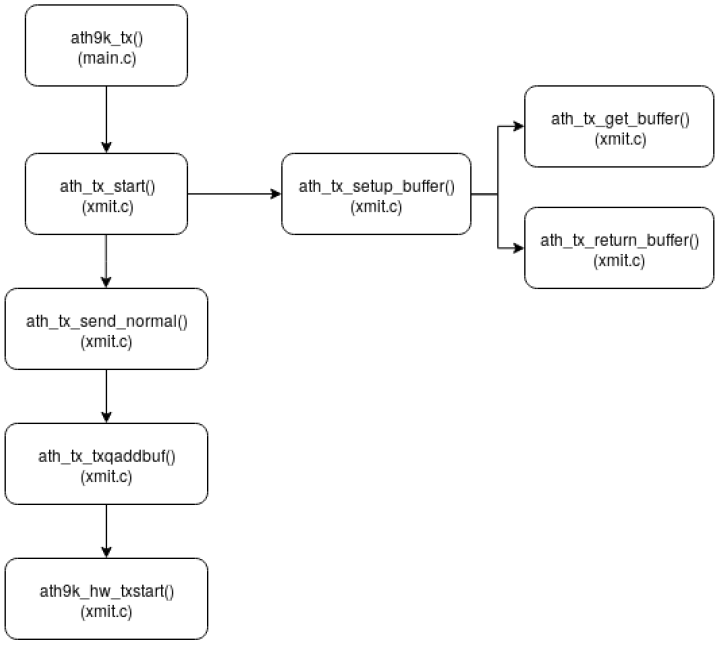Network Driver (ath9k)
Overview
The kernel network driver used throughout the project is ath9k. This page intends to provide an overview of the underlying logic of this driver.
The source code of the ath9k driver can be found at Elixir Bootlin.
Transmission
In this driver, there exists a linked list of empty packet nodes (tx_buf), where each node is a C struct containing space to record the information of an outgoing packet.
When ath9k receives a request to send a packet, it tries to obtain (pop) an empty node from the linked list buffer (tx_buf), fill in the packet information into the node, and then pass this node to a transmission routine by appending it to a transmission queue. After the transmission is finished, the node is emptied and gets added back to the buffer. Since the linked list buffer has a limited size (which can be obtained using the ATH_TXBUF macro) and each transmission temporarily pops one of its nodes, the linked list can be empty under high volumn of transmission demand. In such case, a packet is dropped, and thus cannot be transmitted.
This linked list is directly obtained from the private (priv) field of the hardware that the driver controls (of type ieee80211_hw), which is of type ath_softc and is usually named sc. Then sc along with other arguments are passed to buffer setup routines (ath_tx_setup_buffer), which tries to obtain a buffer node using routine ath_tx_get_buffer. In particular, sc has a field tx of type ath_tx which contains a buffer linked list called txbuf, and the routine ath_tx_get_buffer will try to pop a node from txbuf and return it to the calling routines.
